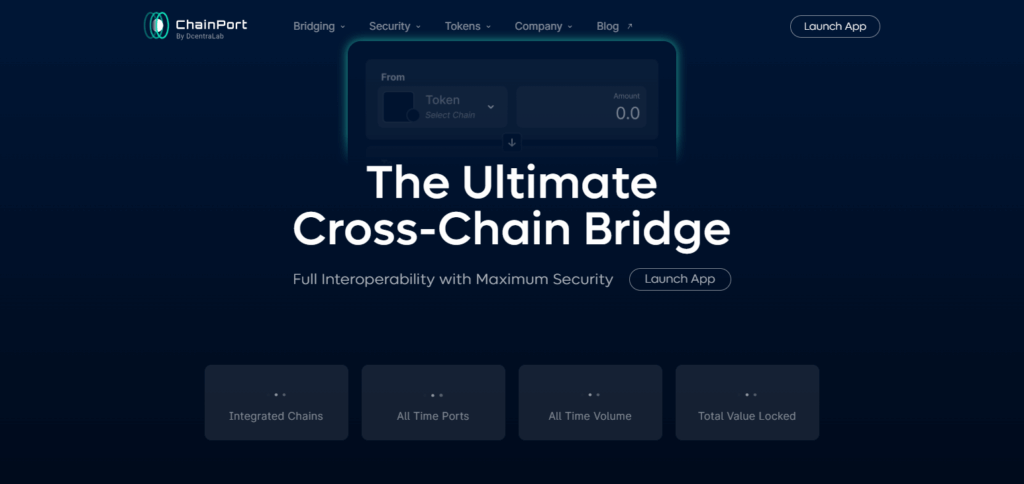In this post, I will discuss the How To Create Bridging-Based Derivative Products. These handy tools let traders move and use assets on different blockchains when they set up a trade.
By stitching together smart contracts, cross-chain bridges, and price oracles, developers can deliver fast, secure deals. Knowing how this works is key for anyone building next-level DeFi apps.
What is Derivative Products?
A derivative product is basically a money tool whose worth comes straight from the ups and downs of something else-think stocks, bonds, oil barrels, or foreign money. Options, futures, swaps, and forwards all fall under this banner.

Traders use them to keep losses in check, to gamble on where prices might head, or just to get a slice of an asset without buying it outright. They matter on Wall Street and Main Street because these contracts add wiggle room, pump fresh cash into the system, and help folks dodge big shocks. Price swings, how jumpy the market is, and how long until a deal expires are the main pieces that decide what a derivative is really worth.
How To Create Bridging-Based Derivative Products

Example: Trading Synthetic Assets Across Chains
Picture a fake Bitcoin-an asset that mimics Bitcoins price moves but lives entirely on Ethereums ledger. That mental image is the first piece of what we call a bridging-based derivative.
Lock-and-Mint Swap
Start by sending real Bitcoin to a cross-chain bridge, locking it behind a digital vault. At the same time, the bridge creates a Wrapped BTC token on Ethereum that matches the locked coins value.

Governing Smart Contract
Over on Ethereum, a smart contract takes charge, constantly checking prices, managing collateral, and basically playing referee. The code decides if everything stays balanced.
DEX Partnerships
Once the synthetic asset is live, it gets dropped into several decentralized exchanges like Uniswap. Traders can then buy, sell, or swap it the way theyd handle any regular derivative.
Oracle Safety Nets
To stop funny business, independent oracles pump real-time Bitcoin rates into the system. If an oracle blinks or lies, built-in safety cuts kick in to protect users.
Yield Opportunities
People can also stake these synthetic coins, letting them earn extra tokens while the assets sit idle. Its like earning interest payments on money you technically dont own yet.
Easy Exit Strategy
When someone wants to cash out, the synthetic coin is burnt, and the original Bitcoin slides out of the bridge ready to hit its home wallet again. The whole loop closes without drama.
Other Place Where To Create Bridging-Based Derivative Products
CME Group
CME Group runs one of the biggest derivatives markets in the world. It mostly builds the bridges that let traders hop from one financial lane to another. The companys tech is solid enough to handle all the twists and turns that come with complex products-like electricity futures one minute and crypto options the next. Put another way, it clears the puzzles between asset classes, countries, and time zones so you dont have to think about them.

Big liquidity pools sit at the heart of CME Groups business. On a busy day, orders pile up fast, which gives you a better shot at locking in a good price. Advanced risk tools also live in the background, quietly shaving off some of the panic that traders tend to feel when things wobble.
Because of those two features, the Group can roll out fresh products that neatly tie older markets together with the newer ones, making the whole system a bit friendlier for everyday investors.
ChainPort
ChainPort acts like a turbocharged cross-chain bridge. It locks tokens on one chain and unlocks them on another inside a single click. Unlike older bridges, users pay no gas fees while the swap is waiting on-chain. That little adjustment makes small trades a whole lot cheaper.
The platform doesnt just swap coins, it supports derivative products the same way a stock exchange handles futures. A trader could bet on Eth priced in Solana dollars without ever converting Eth back to Solana dollars. Traditional bridges cant pull that off because they always force a token home before moving it.

Security is baked into the system before the first trade even starts. Roughly 95 percent of user funds sit in cold wallets, totally offline, while multi-party computation keeps the hot wallet keys shredded across five different machines. If an attacker snags one machine, they still stare at an empty wallet. ChainPort vaults itself that way so fresh financial ideas dont get buried by an expensive hack.
The setup has drawn liquidity from protocols as far apart as Avalanche and Binance Smart Chain in a matter of days. Faucets, limit orders, and flash loans pop up faster when any token moves anywhere. That cross-ecosystem flow usually breathes life into DeFi markets stuck on a single chain.
Why To Create Bridging-Based Derivative Products
Wider Market Reach
One product links stock indexes to crypto wallets and then to commodity futures, letting traders hop across sectors in a single click-potentially even in a single trade ticket.
Bump in Liquidity
When multiple exchanges are stitched together, buy and sell orders add up quickly, often chewing through bid-ask spreads that looked solid just moments earlier.
Smarter Hedging
Because risks sit inside more than one basket, a sudden stun in tech stocks can be offset with fluid adjustments to energy or currency components.
Room for Creativity
Quants. programmers, and portfolio managers can sketch out niche solutions that meet a specific clien-facing need nobody had yesterday.
Lower Friction
Merging disperse pipes trims the number of separate trades-and associated fees-leaving capital for, well, more capital.
Tips For Safe To Create Bridging-Based Derivative Products
Do a Real Risk Check First
Step back and ask what might go wrong-market drops, credit meltdowns, even everyday hiccups. Tackle the biggest worries before anything hits the public.
Stay Legal from Day One
Hunt down the rules in your jurisdiction and get the right signatures. Skipping this can land you in a courtroom, not a trading floor.
Lock It Down with Security
Use solid encryption, well-audited smart contracts, and multi-step logins. Weak safes invite burglars, even in code.
Write Clear Contracts
Spell out who pays what, when, and why. Vagueness is an open door for arguments nobody wants to have.
Test Like a Maniac
Run stress simulations, and let outside auditors poke the code. A bug found early is cheaper than a headline later.
Keep Watching After the Launch
Track performance numbers and market twists, then tweak the product to stay sane. Shipping isn-t the end; it-s the start of the second half.
Risk & Considerations

Market Risk
Prices of the underlying asset can whip up and down, and a fast move might wipe out profits in a heartbeat.
Liquidity Risk
Spreading trades across different exchanges sometimes means there just arent enough buyers when you want to sell.
Counterparty Risk
Theres always a chance the other party in the trade wont hold up their end, leaving you holding nothing.
Technology Risk
Bugs in the bridging code or in the smart contracts themselves can let hackers stroll away with funds. One flawed line can open a door no one planned to leave unlocked.
Regulatory Risk
Laws about crypto derivatives shift faster than the markets do. What is legal in one country today might be banned-or heavily taxed-tomorrow.
Operational Risk
Simple human error, a missed key stroke, or a server crash can grunt a big hole into any carefully built plan.
Pros & Cons
| Pros | Cons |
|---|---|
| Expands market access across assets | Complex regulatory compliance |
| Enhances liquidity by linking markets | High technology and security risks |
| Offers better risk diversification | Potential for operational errors |
| Enables innovative financial products | Counterparty default risks |
| Reduces transaction costs and barriers | Market volatility impacts product value |
Conclusion
Bridging derivatives are like crossing-guard signals for different markets. They pull together stocks, crypto, and other assets, and that usually pumps up trading activity.
Getting these products right takes more than just math. A smart layout, tip-top compliance paperwork, rock-solid tech, and careful risk checking do the trick.
Companies that keep an eye on performance and tweak things as needed find their instruments stay useful. When the dust settles, both issuers and everyday investors walk away feeling the system works a little smoother than it did before.
FAQ
What are bridging-based derivative products?
Bridging-based derivatives are financial instruments that derive their value from assets bridged across multiple blockchains. They allow users to gain exposure to assets on one chain while using collateral or functionality on another.
Why are bridging-based derivatives important?
They enhance liquidity, unlock cross-chain arbitrage, and increase accessibility to assets and markets across blockchain ecosystems like Ethereum, Solana, and BNB Chain.
Can users provide collateral on one chain and trade on another?
Yes. Smart contracts lock collateral on one chain, and mirrored positions or synthetic assets are deployed on the target chain using bridge logic and oracles.
Are bridging-based derivatives secure?
Security depends on bridge reliability, contract audits, and oracle trustworthiness. Use multi-sig wallets, bug bounty programs, and risk audits regularly.









